Situated at Punakaiki (Sweet Food) which is found on the west coast of the South Island of New Zealand are the Pancake Rocks. Thus named for obvious reasons. The other attraction of the area is the Parapoa National Park. The area has a tropical look (with palms and cabbage trees) although we visited at the end of winter and the place was cold and deserted. I believe it is probably a hive of activity in the summer with the rocks, blow holes and numerous walking tracks.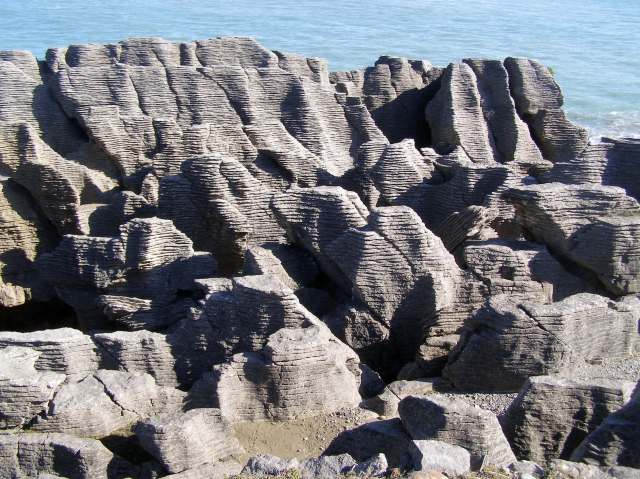
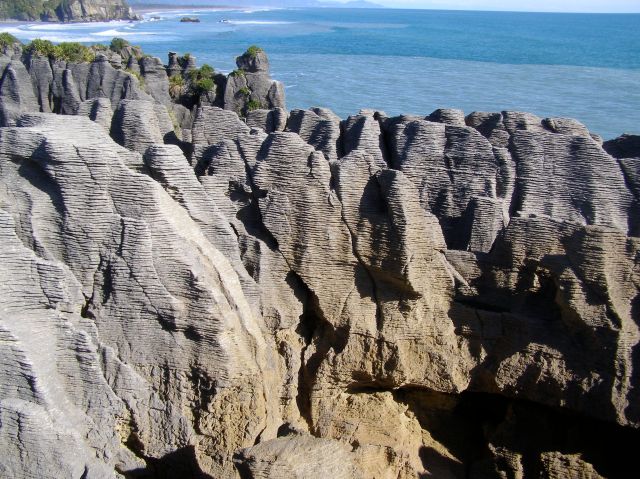

The ocean, at high tide, bursting through several vertical blow holes has eroded the limestone rocks. The pancake layering is due to alternating layers of marine animals and plant matter, hard and soft layering eroding at different rates.
I must have visited at low tide as the blow holes were not the spectacular jet of water that I believe they are at high tide.
If you are ever in New Zealand these really are worth a visit.

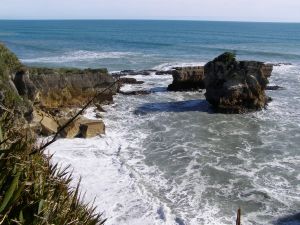

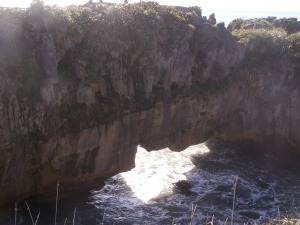
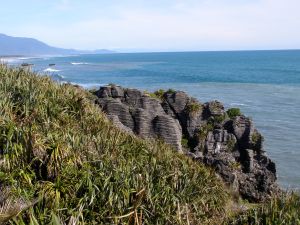
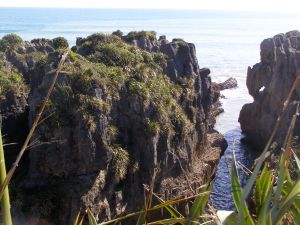
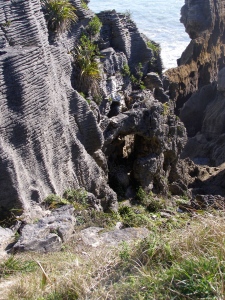
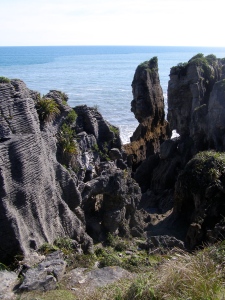

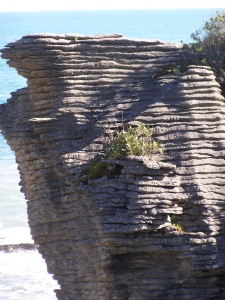
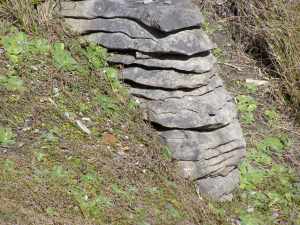
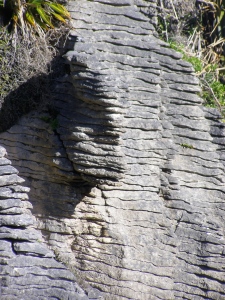






Terrific pictures Irene. This may be as close as I get, but I could feel the spray, even at low tide.
LikeLike
It is one of the good things about blogging. I travel to New Hampshire and other places and you can get to New Zealand and Australia
LikeLike
Agreed.
LikeLike
what an amazing place 🙂 !!!!
LikeLike
It certainly is. I’ve never seen anything like it anywhere else.
LikeLike
Yes it is. You come across it so unexpectedly also which makes it even more jaw dropping.
LikeLike
So captivating. Great shots, Irene.
LikeLike
Thanks Mark. I like the way these challenges make you look at things you had put to the back of your mind.
LikeLike
I never did make it to the Pancake rocks. But anywhere you go in NZ, there’s a picture postcard view round the bend 🙂
LikeLike
You are so right. Particularly in the South Island. We went to the North Island a year later and wished we had done it the other way around.
LikeLike
I lived in Christchurch, (pre-earthquake) for nine years. The South Island scenery is absolutely spectacular, everywhere you go, especially the drive through Arthur’s Pass to the Alps. The South Island is definitely the first to visit and explore when you go to New Zealand.
LikeLike
Looks like a fascinating place to visit. I have never been to NZ so it’s great to see these photos of a place totally unexplored! Thanks for sharing 🙂
LikeLike
You are welcome. I have enjoyed revisiting and hope to post some more in the near future. It was an amazing country.
LikeLike
beautiful place to visit. nice clicks
LikeLike
Thanks
LikeLike
Thanks for the link. To have that many layers of “alternating layers of marine animals and plant matter” would speak of disaster after disaster, perhaps 100 or more disasters to have that many layers of just one thing for each layer. Plants and animals don’t just take turns to lie down and die and wait to turn to rock. Something must have happened to cause layers of dead plants and animals to die in alternate layers. I just can’t imagine how such a thing could happen and not happen elsewhere. I’ve never seen anything quite like this. Amazing. I’m going to be a long time thinking about this one. I appreciate it. Thanks.
LikeLike
What you’ve said makes sense. If you come up with an explanation pass it on please. Glad it’s given you food for thought.
LikeLike
Are they sure each layer contains either plant or marine life, alternated all the way down? Everything kind of hinges on whether or not that is true. Thanks.
LikeLike
That is what we were told but I can’t say I researched it further. You’re getting me interested now so I’ll check it out and let you know.
LikeLike
I’ll be waiting. 🙂 And should I find a little extra time, I might dig into it a little myself. Thanks.
LikeLike
This might make more sense.”Pancake Rocks has irregular chasms and ridges, typical of limestone country. The layers of resistant bands of limestone are separated by softer, thin, mud-rich layers. This type of layering, found in limestones worldwide, is called stylobedding. Although the origin of stylobedding has been debated, it is mostly agreed that this layering is not original bedding, but a secondary feature caused by compaction. Erosion by water, wind and salt spray near the coast has etched out the stylobedding, forming the distinctive ‘pancakes’.” taken from http://www.teara.govt.nz/en/photograph/8320/pancake-rocks
LikeLike
Interesting. Something like this still speaks of something very irregular going on geologically. The article says this type of layering is found worldwide. If so, I’ve never seen anything quite like this.
I don’t think erosion could cause this because it appears that this isn’t just a phenomena of edges being worn out; it’s throughout the entire layering of each, well, layer.
I’m not satisfied with this answer, but then, there’s a lot of “answers” coming from the geological community that I’m not satisfied with, that don’t make sense, like the Grand Canyon in Arizona, USA was created by the constant weathering of the Colorado River. To me, that’s nonsense and doesn’t make the slightest sense.
Anyway, thanks. I’ll be checking out the article. 🙂
LikeLike
Nature can be a dramatic force at times. We once lived near a volcano which had a huge lake at it’s base on the ash plain. After we left the island a cyclone dumped so much rain that a river was formed in the ash plain that opened the lake to the sea. The lake drained entirely and what was left was an area that looked like a mini grand canyon. New Zealand and Iceland are covered in these geological phenomena. I don’t know enough about it to understand it but it certainly makes for wonderful viewing.
LikeLike
Thanks for that information. I’ve seen some really beautiful photographs of NZ. Sometimes I wish I could just see back in time and watch geological time unfold so that I could get the real story instead of the imaginations of the geologists. I’ll bet it’s even more fascinating than we could ever imagine. Although it’s changing somewhat, the overall view is that earth changes come slowly and that there were no major catastrophes outside of an occasional volcano or now increasing number of earthquakes. Your example pointed out the opposite of this thinking. Thanks. 🙂
LikeLike
Oh to be a fly on the wall. Cheers
LikeLike